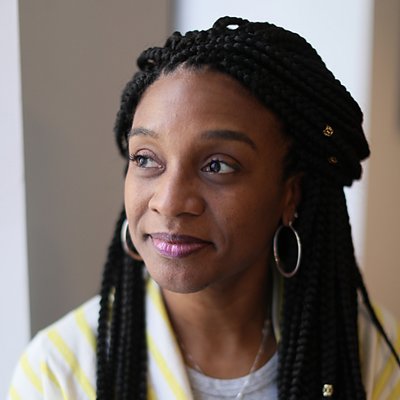The percentage of Black Americans who lack medical insurance has dropped substantially since the adoption of the Affordable Care Act, but that progress largely depends on where people live, according to a new report from the Department of Health and Human Services.
FAQ: What to know about the omicron variant of the coronavirus
People in pockets of the country remain unable to benefit from the law that reshaped the nation’s healthcare system because many Southern states have refused to participate in key provisions that expanded coverage to millions of Americans who had little or no access to medical insurance.
Nearly 1 million Black American adults would become eligible for medical insurance if 12 holdout states expanded Medicaid eligibility under the ACA, according to the HHS report.
“There’s a clear policy choice that’s being made by those states that runs counter to the interests of a large number of people who live in those states,” said Sara R. Collins, vice president of healthcare coverage and access at the Commonwealth Fund. “It’s pretty striking.”
The federal report, which was produced by researchers in HHS’s Office of the Assistant Secretary for Planning and Evaluation, shows historic gains in health insurance coverage and access for Black Americans since the ACA became law in 2010 but also illustrates where gaps remain.
From 2011 to 2019, the number of Black Americans without health insurance who were younger than 65 dropped from 7.1 million people to 4.4 million — or from about 20 percent of the Black population to 12 percent, the report said.
About 37 percent of Black Americans who are uninsured live in three states: Florida, Georgia, and Texas. Florida and Georgia, according to the report, have high numbers of uninsured Black children.

As an internist and president of Family Health Centers of Georgia, Michael W. Brooks said his Atlanta-area facilities provide care each day to thousands of uninsured and underinsured children and adults. About 96 percent of the federally qualified health center’s 18,000 patients, down from about 22,000 before the pandemic began, are African Americans who “work and make enough to survive but not enough to afford insurance,” he said.
And patients who bought health plans through ACA insurance marketplaces often have such high deductibles that they end up paying out of pocket if they need to see a doctor about a chronic condition or an aching arm, Brooks said. Many of the patients treated at the health center choose plans with higher deductibles to have lower premiums.
He noted that Black Americans suffer from conditions such as hypertension and diabetes at disproportionate rates, reflecting the compounded effect of environmental, economic, and political factors for generations. “A lot of it is stress-related. It’s diet-related. They live in food deserts even in a big city like this,” Brooks said.
Anatomy of a health conundrum: The racial gap in vaccinations
So while Brooks applauds the progress made under the ACA to close gaps in access and cover preventive health screenings such as mammograms and colonoscopies, he said more needs to be done to cover the effects of chronic diseases.
According to the federal report, the cost of obtaining health insurance remains a barrier that is more likely to keep 18-to-64-year-old Black Americans from accessing medical care compared with their White peers.
Since the implementation of the ACA, adult Black Americans younger than 65 worry less about the cost of health care, including refilling prescriptions. Still, their concerns remain greater than those expressed by White Americans, the report shows.
Administrative choices and legislative actions, even if they seem like neutral actions, are often political decisions that affect access to health care across racial and ethnic groups, said Jamila Michener, associate professor of government and public policy at Cornell University, where she is co-director of the Cornell Center for Health Equity.
“We like to think that we are making these evidence-based decisions about health policy expansions that are a reflection of what’s best for the population or following best practices in terms of data or science,” Michener said. “It’s really a decision that’s a function of politics. And not just any kind of politics, but politics that has racial dimensions to it whether people realize that when these decisions are being made or not.”
According to the report, despite the ACA ushering in broad improvements in access and coverage across the board, racial and ethnic disparities in coverage remain. About 22 percent of American Indians and Alaska Natives and 20 percent of Latinos lacked health insurance in 2019 compared with 7 to 8 percent of Asian Americans, Pacific Islanders, and Whites. And 2020 saw a slight uptick in the uninsured rate among Black Americans, going from 12 percent in 2019 to 13 percent a year later.
In Alaska Native villages and across communities of color, the enduring silence of grief
The ACA is a sprawling piece of healthcare legislation that was pushed through a Democratic Congress and has become a source of partisan warring ever since.
Not only did the law call for states to expand Medicaid eligibility, allowing a wider pool of low-income earners to qualify for public health insurance coverage, it also created insurance marketplaces and stopped insurance companies from spurning or overcharging people with preexisting conditions. The marketplace health plans are intended for consumers who cannot get affordable benefits through a job and are underwritten by federal subsidies provided to most people buying marketplace plans.
There are differences in the types of insurance coverage 18-to-64-year-old Americans have, with the federal report showing that about 73 percent of White people had private insurance in 2019 compared with 55 percent of Black people. About 30 percent of adult Black Americans younger than 65 have public insurance compared with 18 percent of White Americans that age, the report said.
President Donald Trump was a vehement foe of the law, and his administration took aim at the insurance marketplaces, slashing federal money for advertising, community outreach, and “navigators” who serve as enrollment coaches. President Biden’s arrival in the White House marked a turnabout, as his administration moved swiftly to rehabilitate the law and make health plans more affordable.
“Too often, communities that have been neglected or been left out don’t know what’s out there for them,” Health and Human Services Secretary Xavier Becerra said in an interview. “We’re not waiting for folks to come to us. We’re going to them.”
Death in the prime of life: COVID-19 proves especially lethal to younger Latinos
The administration opened a special enrollment period for people to buy ACA health plans if they needed coverage because of the pandemic, partnered with community-based organizations, and not only reversed cuts for outreach and navigators but put more money into those activities.
The coronavirus relief law Congress adopted in March contained the first expansion of federal subsidies for ACA health plans in the program’s history. The law increases tax credits for monthly insurance payments and allows people with higher incomes to qualify for help through the end of this year.
The increased subsidies and tax credits meant that 66 percent of uninsured Black Americans could find a plan with no monthly price tag in 2021, according to the federal report.
“The results are testament,” Becerra said, “because the number of Black Americans signing up for the ACA in the past year, under the Biden administration, has shot up dramatically.”
According to federal reports, 15 percent of people who signed up for health insurance during the special enrollment period and identified their race or ethnicity were Black American compared with 9 percent in 2019 and 11 percent in 2020.
Amy Goldstein contributed to this report.
By Akilah Johnson

Akilah Johnson is a national reporter exploring the effect of racism and social inequality on health for The Washington Post. She joined The Post in 2021 after working at ProPublica, where she won a George Polk award, a National Magazine award, and was a Pulitzer finalist for examining COVID-19’s toll on Black Americans.





